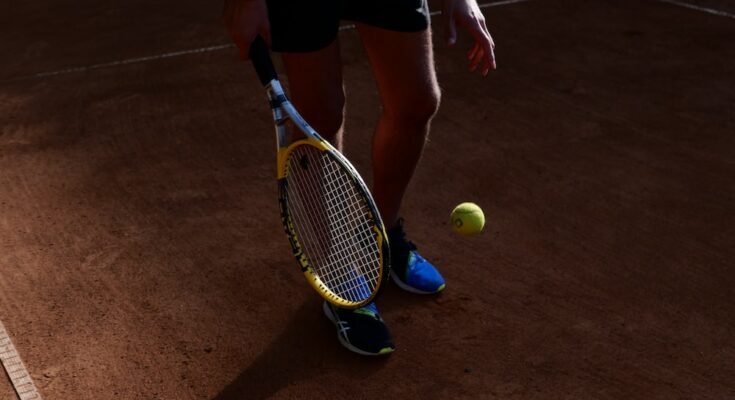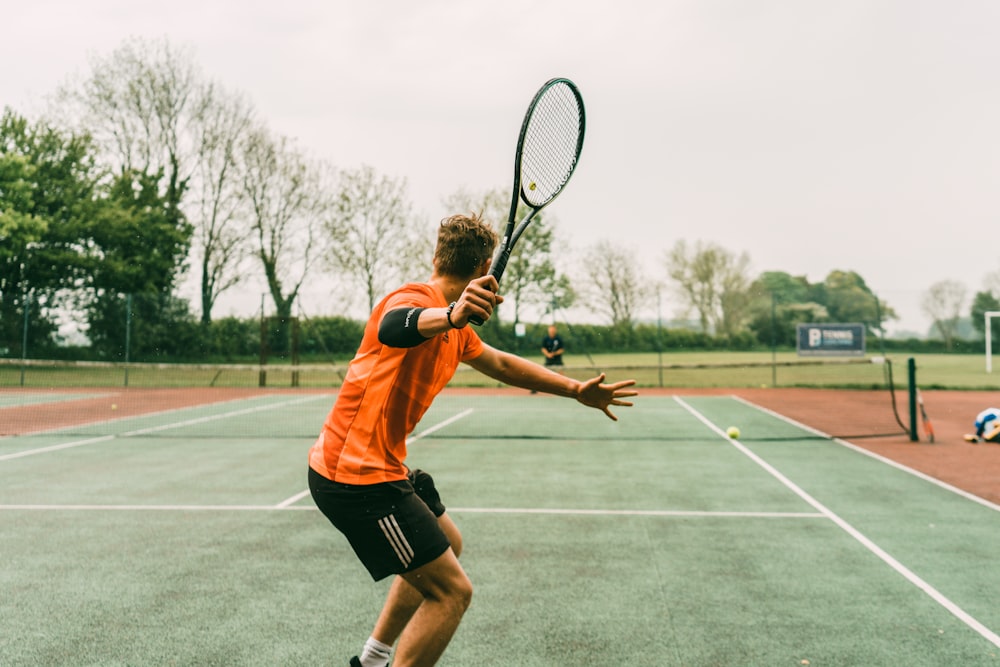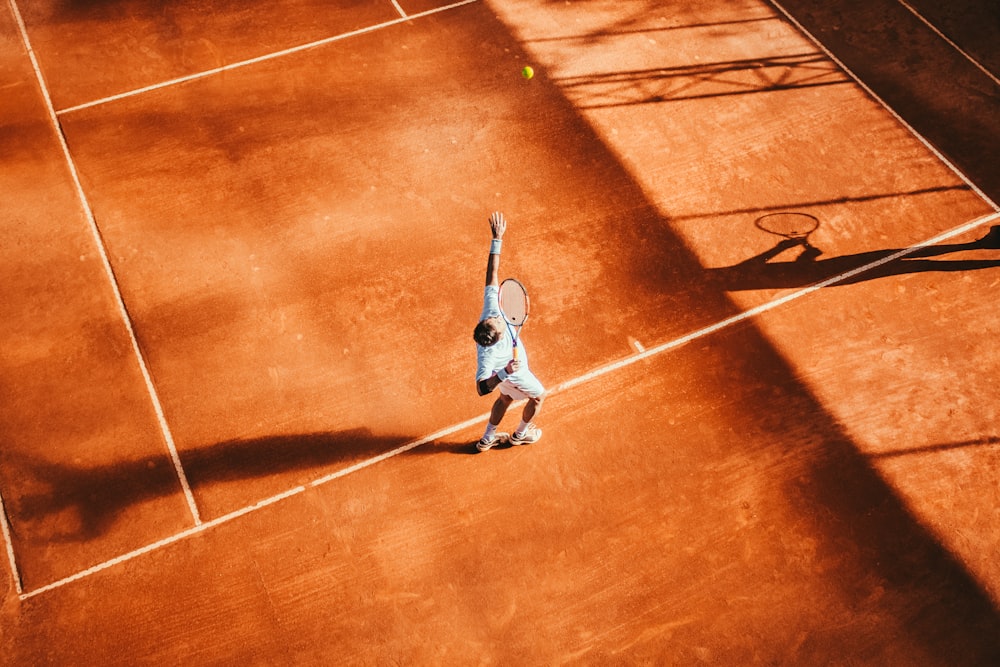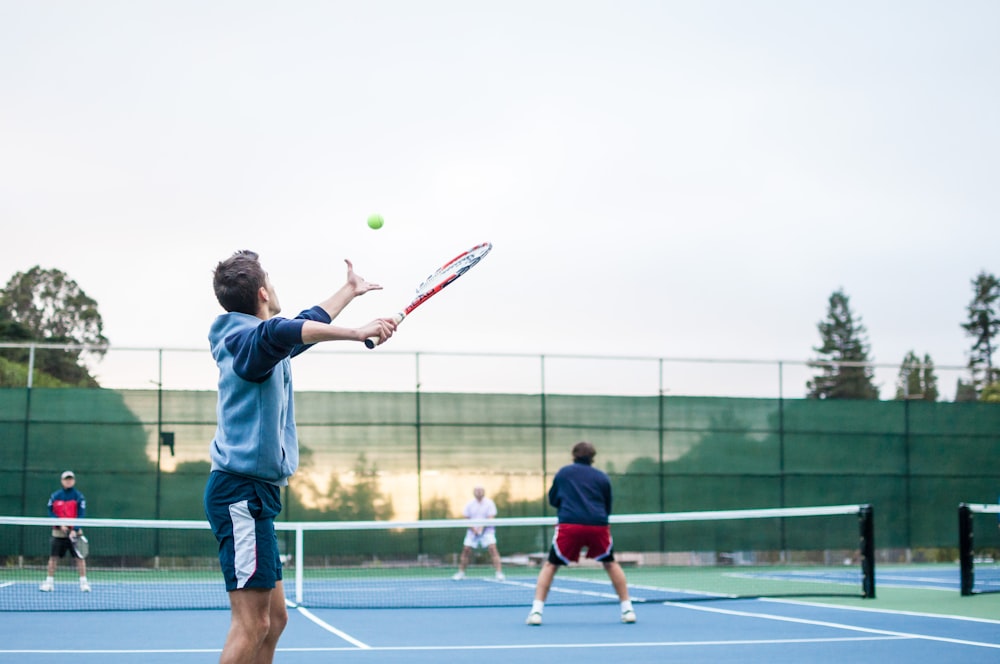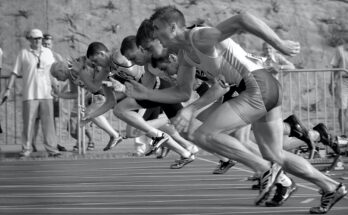Improve Your Serve in Tennis with These Tips
Have you ever lost your temper with yourself during a game because your serve just wouldn’t connect? There are definitely a few minor errors in your form and serving technique, but we can improve that with a few straightforward actions.
One of the trickiest shots in tennis is the serve, but if you get it right, it can make or break your career and determine the outcome of a match.
Prepare for the serve: improve tennis skills
Image via Unplash.com
Tennis’ most crucial move is serving, and a player’s performance will suffer if they are unable to deliver the ball. The server will typically start to feel anxious and under pressure to perform well. You can calm your anxieties and improve your focus on your serving by bouncing the ball a few times and taking a few breaths in and out.
Learn the grip
Your grip is a key element in determining the strength, spin, and precision of your serve. The “continental grip,” in which the right knuckle of the player aligns with the right edge of the racket and the racket forms a straight line to the arm, is the grip that is typically preferred by the server. As a result, the server would be able to deliver precise, in-command service.
The style of serving: improve tennis skills
Image via Unplash.com
The type of serve you want depends depend on your playing style and the strokes you favor hitting over others. When you serve aggressively, you can “serve and volley,” in which the server dashes to the net after the serve is received. Other baseline players, who might feel more at ease hitting groundstrokes than being aggressive at the net, would probably be content with a top-spin or softer serve. You will have problems and end up in a one-sided encounter if you’re playing style and serve style do not match.
Type of serve
Many tennis players today struggle greatly with this. Perhaps they sense a want to learn a flat serve one day, then a desire to learn a top-spin serve the next. The server should only concentrate on one serve at a time, at most. If you focus on more than one serves at once, it’s likely that neither serve will receive the proper training, and you will be left with subpar serves.
Right form: improve tennis skills
Long-term service could enable someone to find their own style. However, after a week or two of rest, a player could start to lose their form. This will be a problem for your serve because it will affect both the accuracy and force of the serve as well as your mental preparation.
Jumping and sudden burst
Image via Unplash.com
You can get height advantage and improve your chances of getting the ball within the service box by jumping before you serve. You can impart a strong spin and force on the tennis ball by hitting it with a rapid burst, which will make it more difficult to return.
Pronation: improve tennis skills
Many individuals who want to serve decently employ this challenging strategy. When the ball makes contact with your wrist, you must pronate your wrist downward. Your chances of hitting the service box will be significantly increased as a result of the ball having greater force and spin.
Finally serving
Tennis’ second serve, not its first, is more significant. The first serve typically initiates the point and establishes the tone for it, but the second serve typically serves as a reserve and frequently has an 80–90% chance of being received. Do not let the fact that you did not ace your opponent frighten you after you missed the first serve. You must be aware that the second serve demands you to swing your racket more quickly and hit the ball harder since doing so will let you to impart more spin on the ball, increasing the likelihood that it will go in.
Continuous practice: improve tennis skills
Image via Unplash.com
Strong servers typically need a lot of energy to maintain their serve throughout the match. You should practice your serve frequently to keep it sharp and train yourself every day to prevent weariness from wearing you out during a match. This will prevent you from losing your stamina.
Practice all of the important shots, including the serve, during warmup. Injury can be avoided and your body is prepared for the court with a proper warmup.
Tennis players require shoulder flexibility and strength. Use the elastic band to mimic serves and other tennis strokes. In particular, Novak Djokovic uses elastic bands to strengthen his tendons and warm up his muscles.
Focus on mental game
Missing the opening serve has no consequence. Many players are unaware that they receive another opportunity to serve after missing their first attempt. A player will start to fault and continuing faulting until he realizes his issues when he begins to question whether or not he can make the serve. One of the most crucial things to keep in mind during a match is to remain upbeat while serving. It’s unacceptable to lose because of uncertainty about your performance.
Focus on speed and accuracy: improve tennis skills
Tennis beginners frequently serve the ball with all of their might and pace. However, you don’t have to strike the ball as hard as you can! Don’t give a serve all of your focus. Professional athletes typically provide roughly 80% of their energy. When you serve, pay more attention to precision than to power.
Instead of merely hitting it as hard as you can, practice hitting the ball exactly where you want it to go. Keep your eye on the prize. Make time in your tennis schedule to practice your serves.
Eyes on the ball
Image via Unplash.com
Even though it seems simple, every tennis player needs to be proficient in this ability. When your opponent serves you the ball, practice keeping your eyes on the ball. Put it in the center of your gaze. As it occurs to you, follow it. As you strike it with your racket, observe. The ball should then be followed as it advances across the court.
Even when the ball makes contact with your racquet, keep your head motionless and your eyes fixed on the court.

